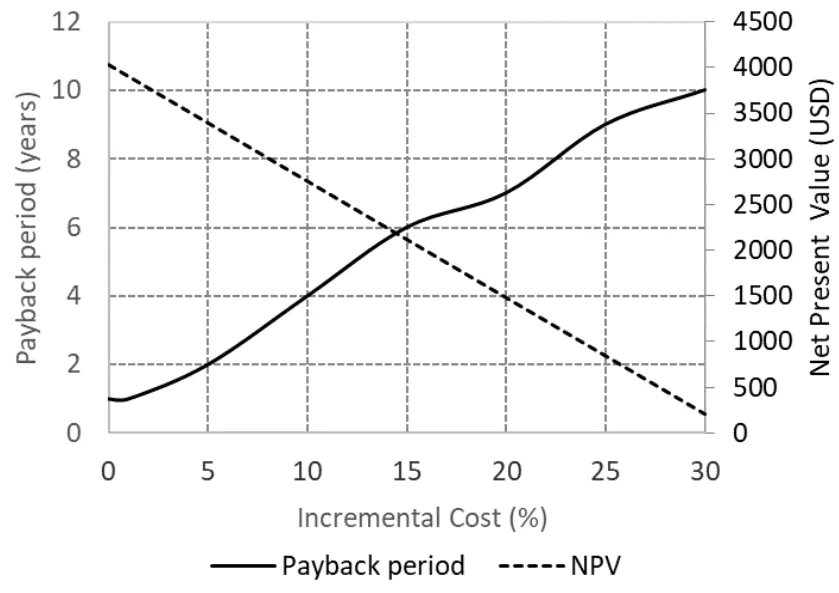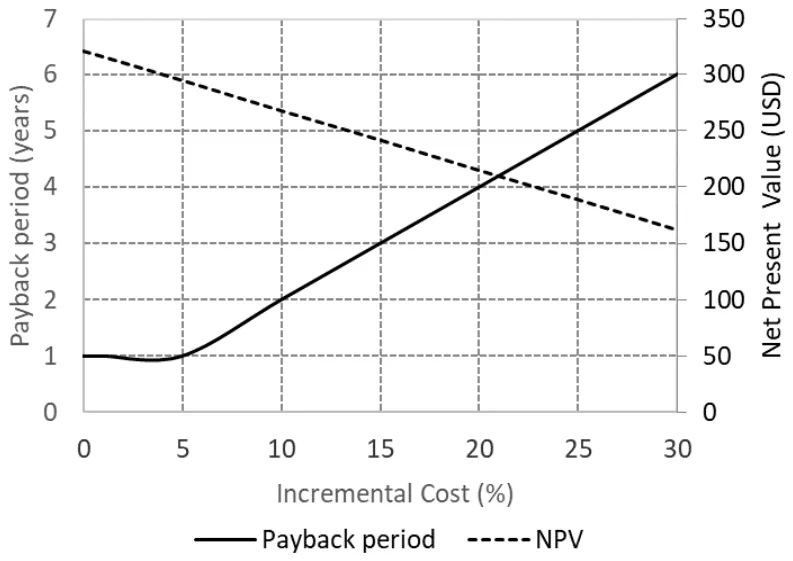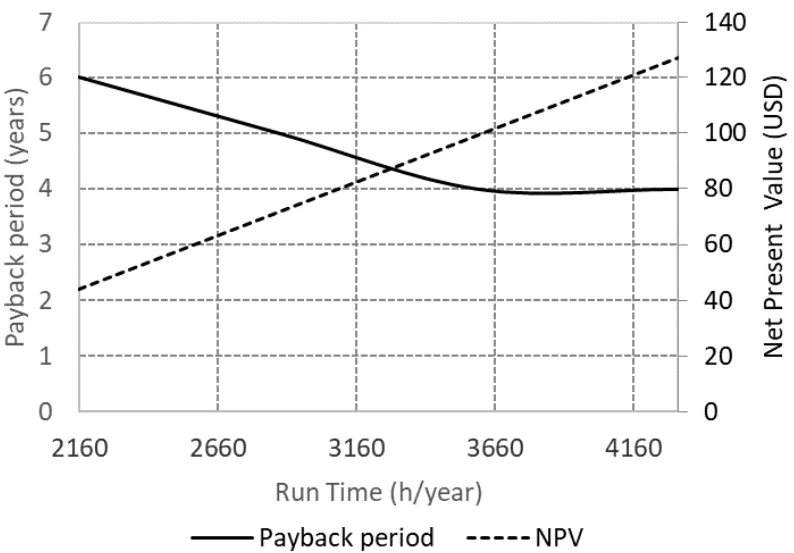The content of this introductory paper is based on the article "[Title of the paper: Induction motors with copper rotor: a new opportunity for increasing motor efficiency]" published by [Publisher: International Journal of Electrical and Computer Engineering (IJECE)].

1. Overview:
- Title: Induction motors with copper rotor: a new opportunity for increasing motor efficiency
- Authors: Percy R. Viego Felipe, Vladimir Sousa Santos, Julio R. Gómez Sarduy, José P. Monteagudo Yanes, Enrique Ciro Quispe
- Publication Year: 2023
- Publication Journal/Academic Society: International Journal of Electrical and Computer Engineering (IJECE)
- Keywords: Copper rotor induction motor, Economic feasibility, Electric motors, Energy efficiency, High-efficiency motors
2. Abstract:
The copper rotor induction motor (CURIM) was recently introduced because it has lower rotor fusion losses than the aluminum rotor (ALRIM). Furthermore, with CURIM, it is easier to reach IE4 and IE5 efficiency levels. The CURIM is advantageous for compact motors, escalators, and electric vehicle applications. However, CURIMs present slip, power factor, temperature increase, and torque decrease problems that must be analyzed. This study compared the economic feasibility of using CURIM with ALRIM by applying discount techniques. A case study was carried out in a sugar company with a cyclical operation, where 5.5 kW motors will be installed in the intermediate conductors of the mill's feeders. The facility works three shifts between 3 and 6 months. The cost increase (ACI) of CURIM over ALRIM was between 1.1 and 1.5 times. With 3,600 h/year and 4,000 h/year of operation, the ACI greater than 10%, it was found that the payback is more than four years, and the net present value (NPV) grows linearly.
3. Introduction:
A significant reduction in rotor losses is achieved using copper rotor induction motors (CURIM) instead of aluminum rotor induction motors (ALRIM). This is mainly because the electrical conductivity of copper is approximately 170% that of aluminum; therefore, the total machine losses also decrease. In a medium power induction motor, from 15% to 25% of the total losses, the efficiency increases from 2% to 5% [1], [2]. However, problems regarding the copper casting process have had to be solved first due to the high melting temperature of copper compared to aluminum (1,083 °C for copper compared to 660 °C for aluminum). The fundamental difficulties that appeared were shortened life of the die, oxidation in the casting process of pure copper, and porosity distributed in the molten copper [2].
As the electric power cost grew, awareness grew that the motor life cycle cost is essential, and consumers realized the convenience of paying a higher initial cost for more efficient motors [3]. Additionally, a driving factor has been government regulations and incentives. So, many companies and associations have worked to eliminate the drawbacks of copper casting and have developed die materials and casting processes for rotor manufacturing, which have made mass production possible and economical [1], [2], [4].
4. Summary of the Study:
Background of the Research Topic:
The copper rotor induction motor (CURIM) was recently introduced because it has lower rotor fusion losses than the aluminum rotor (ALRIM). Furthermore, with CURIM, it is easier to reach IE4 and IE5 efficiency levels. The CURIM is advantageous for compact motors, escalators, and electric vehicle applications.
Status of Previous Research:
Problems regarding the copper casting process have had to be solved first due to the high melting temperature of copper compared to aluminum (1,083 °C for copper compared to 660 °C for aluminum). The fundamental difficulties that appeared were shortened life of the die, oxidation in the casting process of pure copper, and porosity distributed in the molten copper [2].
Purpose of the Study:
This paper compares CURIMs with ALRIMs based on construction characteristics and associated costs, operation, losses, electromechanical, energy, and temperature characteristics. Finally, an economic feasibility study of replacing a 5.5 kW motor in a sugar factory is conducted by comparing the results of replacing a CURIM with an ALRIM of equal capacity.
Core Study:
The study carried out on the copper casting process at CURIM indicates that the cost of designing, casting, and installing a copper rotor motor of a specific type (that is, rated power, number of poles, voltage) built by a manufacturer, may differ from the cost of another manufacturer.
5. Research Methodology:
Research Design:
A case study was carried out in a sugar company with a cyclical operation, where 5.5 kW motors will be installed in the intermediate conductors of the mill's feeders. The facility works three shifts between 3 and 6 months.
Data Collection and Analysis Methods:
The economic analysis was carried out in a case study using the criterion of the differential net present value (Differential NPV) [27] so that the equal or almost equal costs are eliminated (for example, those related to the cost of the stator, those of installation, maintenance).
Research Topics and Scope:
Economic feasibility study of replacing a 5.5 kW motor in a sugar factory is conducted by comparing the results of replacing a CURIM with an ALRIM of equal capacity.
6. Key Results:
Key Results:
- Table 1. Average loss segregation in seven CURIMs of 11.2 kW [5]
- Table 2. Other performance characteristics of the 11.2 kW motor [5]
- Table 3. Measured torque values for the 11.2 kW motor [5]
- Table 4. Efficiency increase and total loss reduction in various CURIM compared with ALRIM [5]
- Table 5. Comparison between Al and Cu compact rotors 75 kW motors [2]
- Table 6. Parameters for 11 kW, six pole escalator copper rotor motor [2]
- Table 7. Parameters for a 160 kW electric vehicle [2]
- Table 8. Parameters for economic analysis using the differential NPV method for a 5.5 kW motor [27]



Figure Name List:
- Figure 1. NPV and Payback period function as the initial incremental cost for 4,000 h of operation
- Figure 2. Payback period and NPV as a function of initial differential cost and 8,000 hours of operation
- Figure. 3. NPV and payback period as a function of initial incremental cost and variable operating time
7. Conclusion:
The study evaluated the advantages and disadvantages of CURIMs, as one of the new technological improvements of induction motors to increase energy efficiency. As a result, it was possible to show that the copper losses of the rotor, friction, and beating, and the additional losses are lower in the CURIM than in the ALRIM, and therefore the efficiency is higher.
8. References:
- [1] D. Liang, J. Yu, X. Yang, and V. Zhou, "Copper rotor motors in China," in 2013 International Conference on Electrical Machines and Systems (ICEMS), Oct. 2013, pp. 2031-2034, doi: 10.1109/ICEMS.2013.6713191.
- [2] D. Liang, L. Gao, and V. Zhou, "Recent trend development for high performance copper rotor motors in China," in 2018 21st International Conference on Electrical Machines and Systems (ICEMS), Oct. 2018, pp. 2571-2575, doi: 10.23919/ICEMS.2018.8549253.
- [3] S. Lie and C. Di Pietro, "Copper die-cast rotor efficiency improvement and economic consideration," IEEE Transactions on Energy Conversion, vol. 10, no. 3, pp. 419-424, 1995, doi: 10.1109/60.464863.
- [4] D. Liang, X. Yang, J. Yu, and V. Zhou, "Experience in China on the die-casting of copper rotors for induction motors," in 2012 XXth International Conference on Electrical Machines, Sep. 2012, pp. 256-260, doi: 10.1109/ICElMach.2012.6349874.
- [5] D. T. Peters, J. G. Cowie, E. F. Brush, and D. J. Van Son, "Copper in the squirrel cage for improved motor performance," in IEEE International Electric Machines and Drives Conference 2003, IEMDC'03, vol. 2, 2002, pp. 1265-1271, doi: 10.1109/IEMDC.2003.1210402.
- [6] S. Yamamoto, "Overview of the latest research and development for copper die-cast squirrel-cage rotors," in 2018 International Power Electronics Conference (IPEC-Niigata 2018 -ECCE Asia), May 2018, pp. 1949-1954, doi: 10.23919/IPEC.2018.8507971.
- [7] D. Liang and V. Zhou, "Recent market and technical trends in copper rotors for high-efficiency induction motors," in 2018 International Power Electronics Conference (IPEC-Niigata 2018 -ECCE Asia), May 2018, pp. 1943-1948, doi: 10.23919/IPEC.2018.8507879.
- [8] M. Thieman, R. Kamm, and J. Jorstad, "Copper motor rotors: Energy saving efficiency, now also economic feasibility," in 2007 Electrical Insulation Conference and Electrical Manufacturing Expo, Oct. 2007, pp. 328-333, doi: 10.1109/EEIC.2007.4562637.
- [9] R. Yabiku, R. Fialho, L. Teran, A. Santos, E. Rangel, and D. Dutra, "A comparative study between copper and aluminum induction squirrel cage constructions," in 2010 Record of Conference Papers Industry Applications Society 57th Annual Petroleum and Chemical Industry Conference (PCIC), Sep. 2010, pp. 1-9, doi: 10.1109/PCIC.2010.5666832.
- [10] ANSI, "Motors and generators," NEMA, 2016, Accessed Feb. 02, 2022. [Online]. Available: https://www.nema.org/docs/default-source/standards-document-library/ansi_nema-mg-1-2016-contents-and-foreword.pdf?sfvrsn=f27547b8_1
- [11] D. T. Peters, E. F. Brush, and J. L. Kirtley, "Die-cast copper rotors as strategy for improving induction motor efficiency," in 2007 Electrical Insulation Conference and Electrical Manufacturing Expo, Oct. 2007, pp. 322-327, doi: 10.1109/EEIC.2007.4562636.
- [12] Q. Zhang, H. Liu, Z. Zhang, and T. Song, "A cast copper rotor induction motor for small commercial EV traction: Electromagnetic design, analysis, and experimental tests," CES Transactions on Electrical Machines and Systems, vol. 2, no. 4, pp. 417-424, Dec. 2018, doi: 10.30941/CESTEMS.2018.00053.
- [13] M. Popescu, N. Riviere, G. Volpe, M. Villani, G. Fabri, and L. di Leonardo, "A copper rotor induction motor solution for electrical vehicles traction system," in 2019 IEEE Energy Conversion Congress and Exposition (ECCE), Sep. 2019, pp. 3924-3930, doi: 10.1109/ECCE.2019.8912248.
- [14] V. Mallard, G. Parent, C. Demian, J.-F. Brudny, and A. Delamotte, "Increasing the energy efficiency of induction machines by the use of grain-oriented magnetic materials and die casting copper squirrel cage in the rotor," IEEE Transactions on Industry Applications, vol. 55, no. 2, pp. 1280-1289, Mar. 2019, doi: 10.1109/TIA.2018.2873532.
- [15] A. Marfoli, M. Di Nardo, M. Degano, C. Gerada, and W. Chen, "Rotor design optimization of squirrel cage induction motor-part I: problem statement," IEEE Transactions on Energy Conversion, vol. 36, no. 2, pp. 1271-1279, Jun. 2021, doi: 10.1109/TEC.2020.3019934.
- [16] M. Di Nardo, A. Marfoli, M. Degano, C. Gerada, and W. Chen, "Rotor design optimization of squirrel cage induction motor-part II: results discussion," IEEE Transactions on Energy Conversion, vol. 36, no. 2, pp. 1280-1288, Jun. 2021, doi: 10.1109/TEC.2020.3020263.
- [17] D. Fodorean, C.-V. Pop, and D.-C. Popa, "Electromagnetic and structural analysis of an induction motor with copper rotor bars used in automotive applications," in 2021 IEEE 6th International Forum on Research and Technology for Society and Industry (RTSI), Sep. 2021, pp. 340-345, doi: 10.1109/RTSI50628.2021.9597235.
- [18] A. T. De Almeida, F. J. T. E. Ferreira, and A. Q. Duarte, "Technical and economical considerations on super high-efficiency three-phase motors," IEEE Transactions on Industry Applications, vol. 50, no. 2, pp. 1274-1285, Mar. 2014, doi: 10.1109/TIA.2013.2272548.
- [19] P. R. Viego, J. R. Gómez, and E. A. Padrón, "New syncronous high-efficiency motors," Universidad y Sociedad, vol. 12, no. 2, pp. 205-211, 2020. Accessed Jan. 21, 2022. [Online]. Available: http://scielo.sld.cu/scielo.php?script=sci_arttext&pid=S2218-36202020000200205&lng=es&tlng=es
- [20] P. R. Viego-Felipe, J. R. Gómez-Sarduy, V. Sousa-Santos, and E. C. Quispe-Oqueña, "Permanent magnet assisted synchronous reluctance motors: A new advance in electric motors development," (in Spanish), Ingeniería, investigación y tecnología, vol. 19, no. 3, pp. 269-279, Jul. 2018, doi: 10.22201/fi.25940732e.2018.19n3.023.
- [21] P. R. Viego, V. Sousa, J. R. Gómez, and E. C. Quispe, "Direct-on-line-start permanent-magnet-assisted synchronous reluctance motors with ferrite magnets for driving constant loads," International Journal of Electrical and Computer Engineering (IJECE), vol. 10, no. 1, pp. 651-659, Feb. 2020, doi: 10.11591/ijece.v10i1.pp651-659.
- [22] G. C. Mechler, "Manufacturing and cost analysis for aluminum and copper die cast induction motors for GM's powertrain and R&D Divisions," Thesis, Massachusetts Institute of Technology, 2010.
- [23] A. Marfoli, M. DiNardo, M. Degano, C. Gerada, and W. Jara, "Squirrel cage induction motor: a design-based comparison between aluminium and copper cages," IEEE Open Journal of Industry Applications, vol. 2, pp. 110-120, 2021, doi: 10.1109/OLA.2021.3073820.
- [24] H.-R. Noh, H.-S. Shin, C.-M. Kim, and K.-C. Kim, "A study on the effect of rotor bars of induction motor for electric vehicle," in 2021 24th International Conference on Electrical Machines and Systems (ICEMS), Oct. 2021, pp. 1415-1418, doi: 10.23919/ICEMS52562.2021.9634599.
- [25] Ministerio de Justicia, "System for the formation of electricity rates for the collection of electricity service: Gaceta Oficial No. 26," (in Spanish) Gaceta Oficial No. 26 (Extraordinaria), La Habana, Cuba, 2021. Accessed: Apr. 13, 2021. [Online]. Available: https://www.gacetaoficial.gob.cu/sites/default/files/goc-2021-ex26_0_0.pdf.
- [26] J. C. Andreas, Energy-efficient electric motors: selection and application. United States: Marcel Dekker, Inc., New York, NY, 1982.
- [27] M. J. Landt and A. D. Reed, "Project evaluation," in Archaeological Data Recovery in the Piceance and Wyoming Basins of Northwestern Colorado and Southwestern Wyoming, Archaeopress Publishing Ltd, 2018, pp. 333-336.
- [28] Siemens Industry, "General purpose low voltage cast iron frame motors," Siemens Industry, USA, 2011. Accessed Dec. 13, 2021. [Online]. Available: https://assets.new.siemens.com/siemens/assets/api/uuid:ff39a5d9-875a-4f16-bf17-79beae7a11c7/nema-general-purpose-motors-cast-iron-gp100-brochure.pdf
- [29] R. Saidur and T. M. I. Mahlia, "Energy, economic and environmental benefits of using high-efficiency motors to replace standard motors for the Malaysian industries," Energy Policy, vol. 38, no. 8, pp. 4617-4625, Aug. 2010, doi: 10.1016/j.enpol.2010.04.017.
- [30] B. Cassoret, J. Manata, V. Mallard, and D. Roger, "Comparative life cycle assessment of induction machines made with copper-cage or aluminium-cage rotors," IET Electric Power Applications, vol. 13, no. 6, pp. 712-719, Jun. 2019, doi: 10.1049/iet-epa.2018.5401.
9. Copyright:
- This material is a paper by "[Percy R. Viego Felipe]". Based on "[Induction motors with copper rotor: a new opportunity for increasing motor efficiency]".
- Source of the paper: [DOI: 10.11591/ijece.v13i3.pp2409-2418]
This material is summarized based on the above paper, and unauthorized use for commercial purposes is prohibited.
Copyright © 2025 CASTMAN. All rights reserved.